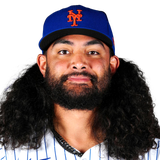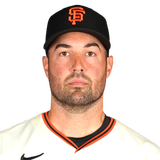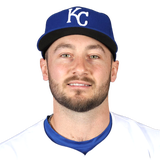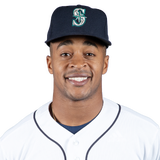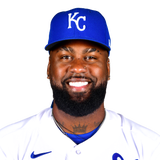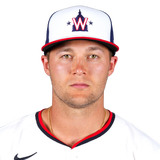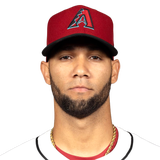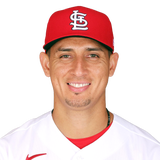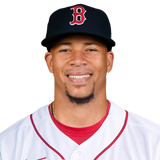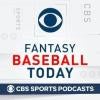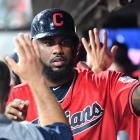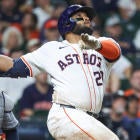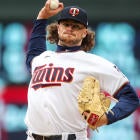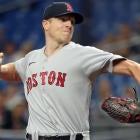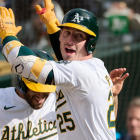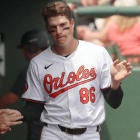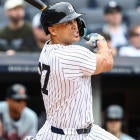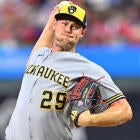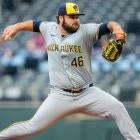Circumstances have changed since our first round of draft prep. We're working with a much shorter schedule now, which of course changes the way certain players are valued. It was always the year of the pitcher, with the most skilled at that position enjoying a bump in value at a time when offense dominates the game. But now, even those with workload limitations are able to join in.
Consider this your reintroduction to the 2020 draft pool, accounting for all the changes that have taken place since and because of the coronavirus lockdown. Over the span of 20 articles, Scott White and Chris Towers look at the top 200 in Scott's Rotisserie rankings, highlighting the reasons for and against drafting each. It makes for a well-rounded education on every player, revealing critical details that more argument-based evaluations might conveniently leave out.
So if you want a crash course on this year's player pool, particularly in light of more recent events, you've come to the right place. We're going through Nos. 161 through 170. And you can find the rest right here: 1-10 | 11-20 | 21-30 | 31-40 | 41-50 | 51-60 | 61-70 | 71-80 | 81-90 | 91-100 | 101-110 | 111-120 | 121-130 | 131-140 | 141-150 | 151-160 | 161-170 | 171-180 | 181-190 | 191-200
No. 161-170
| ||||||||||
The Case For: We only saw Manaea for 29.2 innings, but they might have been the most impressive of his career. He struck out 27.6% of opposing batters, well up from his 16.5% rate in 2018, and he did better than ever at limiting damage when batters did make contact. It's a tiny sample size, but Manaea's increased confidence in his slider means it may not have been unsustainable.
The Case Against: It's not even 30 innings, for a pitcher who was largely written off as mediocre prior to 2019. He has one of the slowest fastballs in the league and still allowed a robust 37.1% hard-hit rate, so it's not like he was Kyle Hendricks there either. The small sample size could have been a real signal that Manaea has taken a big step forward, but the more likely outcome is that Manaea is the guy the Fantasy community was so unimpressed with prior to 2019. -Chris Towers
| ||||||||||
The Case For: The days of people hoping Ray can be an ace are long gone, but that doesn't mean he can't still be useful. You're going to have to go in knowing he won't be much help for your WHIP and ERA, but if he can just be neutral there, he will rack up 200-plus strikeouts and should win a decent number of games for an improving Diamondbacks team. Now that he's more appropriately priced, it's much easier to buy Ray and find a way to fit him into your lineup.
The Case Against: It can be tough to get around the holes in Ray's game. The strikeouts are great, but they might be all he gives, thanks to his inability to pitch deep into games. Is there enough upside to overlook the flaws? Strikeouts are pretty easy to find these days. -Chris Towers
| ||||||||||||
The Case For: Not everyone can be an immediate success, but Hampson showed enough growth late in the season to get excited about his prospects for 2020. He stumbled through most of the season, dealing with an inconsistent role, but broke out in September, hitting .318/.368/.534 with five homers and seven nine steals. I wouldn't expect the power to continue into 2020 — though his breakout did coincide with a swing change that saw Hampson ditch the leg kick in his set up, so I don't want to discount the possibility entirely. Still, if he can just be competent with the bat and earn an everyday job, Hampson is going to be a huge value in Roto leagues for the stolen bases alone.
The Case Against: You want to take September stats with a gigantic grain of salt, given extended rosters and the presence of players who otherwise wouldn't be in the majors. Did Hampson's swing adjustment really help him break out, or was he feasting on inferior competition? In Hampson's case, he also struggled mightily at Triple-A and struck out in 27.7% of his plate appearances between both levels, a terrifying sign for someone without a ton of pop. Coors Field can help cover up for a lot of flaws, but it's an open question as to whether he'll be able to hit enough to earn an everyday job in a somewhat crowded field in Colorado. -Chris Towers
| ||||||||||||
The Case For: How important are stolen bases for Fantasy these days? Despite a disastrous season that saw him hit .228 and earn a trip back to the minors, Mallex Smith still finished as a top-150 player in Roto leagues in 2019. Leading the majors in the scarcest category in Fantasy will do that, it turns out. 2019 is probably his realistic floor, and he'd still be a value at his cost.
The Case Against: Smith earned every bit of his awful 2019 batting line; this wasn't just bad luck. He had a .219 expected batting average, and while he should be expected outperform his xBA thanks to his speed, that's still a pretty putrid floor. If Smith doesn't bounce back to being at least a .270 hitter, he may not do enough to justify an everyday job, even on a mediocre Mariners team. It could end up being a wasted pick. -Chris Towers
| ||||||||||||
The Case For: Given the demand for stolen bases in traditional 5x5 leagues, Scott Kingery is almost a dream come true at his going rate. A legitimate 20-steal threat (in a full-length season, anyway) who also hits home runs and is eligible at third base and the outfield? Gimme, gimme. Second base is coming, too, in all likelihood. With Maikel Franco and Cesar Hernandez both now out of the picture, a starting job (again, most likely at second) is his for the taking.
The Case Against: We may be just a little too sanguine about Kingery's actual skill level. Yes, he did put together a 20-20 season in his final year in the minors, earning him a long-term contract and some amount of prospect hype, so it's not like his 2019 came out of nowhere. But he doesn't hit the ball especially hard and struck out at a nearly 30 percent clip. His .258 batting average is unimpressive to begin with, and yet the data suggests it should have been even lower. He outperformed all of his expected stats, as a matter of fact. If not for the inflated value of stolen bases, Kingery would be small potatoes in Fantasy, and points-league owners are justified in treating him as such. -Scott White
| ||||||||||||
The Case For: There aren't many players in baseball who hit the ball harder than Reyes, even in an era where seemingly everyone can hit 425-foot homers. He ranked in the 99th percentile in average exit velocity and the 98th percentile in hard-hit rate, per Statcast data, and was in the 78th percentile in expected wOBA on contact. The 28.5% strikeout rate is a little alarming, but he more than makes up for that when he does make contact, to the point where he was probably a bit unlucky to hit under .250. With a bit better luck — not having to switch leagues mid-season should help, too — Reyes could have yet another breakout season under his belt.
The Case Against: While it's not a Joey Gallo-esque strikeout rate, it does put a ceiling on how helpful Reyes can be in average. And since he doesn't run, you're basically looking at a power-only profile. That puts a lot of pressure on the bat to play up, in an era where power is easier to find than ever. -Chris Towers
| ||||||||||||
The Case For: Senzel didn't light the world on fire in his rookie season, but you don't have to squint too hard to see how his profile could be Fantasy viable. Pro-rated to 600 plate appearances, he was on pace for 17 homers and 20 steals — something only 11 players did in 2019. He'll need to hit for more contact to make that profile play up, but it's a pretty great starting point.
The Case Against: Senzel missed most of September with a torn labrum. That's a tough injury to come back from even if you're an established major-leaguer, but it makes someone like Senzel a huge risk. The Reds brought in two outfielders in Nick Castellanos and Shogo Akiyama this offseason, so it's not even clear if Senzel will have an everyday job. -Chris Towers
| ||||||||||||
The Case For: In what amounted to a little more than half a season, Gurriel put up numbers befitting a premier slugger, hitting a bunch of fly balls with above-average exit velocity for a big home run total. It was enough to ensure him a regular spot in the Blue Jays lineup (where he should be right at home alongside upstarts like Vladimir Guerrero, Bo Bichette and Cavan Biggio) even though his final two months were basically wrecked by injuries.
The Case Against: Gurriel got insanely hot for about a five-week stretch when he returned from the minors in late May, batting .352 (44 for 125) with 15 homers and a 1.156 OPS. His numbers in his other 189 at-bats were pedestrian, and while the injuries might explain some of it, they don't explain all of it. He's an undisciplined hitter with some vulnerability to strikeouts, and because he sells out so hard for power, with so few of his elevated balls manifesting as line drives, he projects for a low BABIP. Batting average could be a problem for him, and he doesn't have the on-base skills to make up for it. Will the power he provides be enough to justify the downside in a power-saturated environment? -Scott White
| ||||||||||
The Case For: With Carlos Martinez hopefully moving back to the rotation, Gallegos seems like he could be the Cardinals' closer in 2020, and that's exciting stuff. He doesn't throw incredibly hard, but Gallegos gets the most out of his arsenal with an elite spin rate on the fastball and an unhittable slider. He doesn't have a long track record, but Gallegos sure looked the part of a dominant closer in 2019.
The Case Against: The Cardinals have some other options for the ninth, most notably Andrew Miller, who is known to vulture saves from time to time. Jordan Hicks should also be back sometime in the summer, so if Gallegos stumbles, there may not be a ton of job security. -Chris Towers
| ||||||||||
The Case For: Robles wasn't the Angels' first or even second choice for saves entering last year, but he was the one who calmed the waters when he got his chance in the closer role. And he seems ... adequate enough for the task, collecting more than a strikeout per inning with good control. New manager Joe Maddon has already said he sees no need to make a change there, which is more assurance than most ninth-inning candidates get these days. It's also worth noting Robles had a 1.52 ERA over the final four months last year, spanning 44 appearances.
The Case Against: While Robles may be adequate, he's not exemplary, and usually the relievers who last as closers are among the very best at pitching an inning at a time. He had good home run luck last year, which helps explain the 3.54 SIERA and 3.89 xFIP, and because he doesn't have a history as a closer or even an effective big-league reliever, a bad week could be enough to cost him his job. -Scott White
So which sleepers should you snatch in your draft? And which undervalued first baseman can help you win a championship? Visit SportsLine now to get rankings for every single position, all from the model that called Kenta Maeda's huge breakout last season, and find out.








